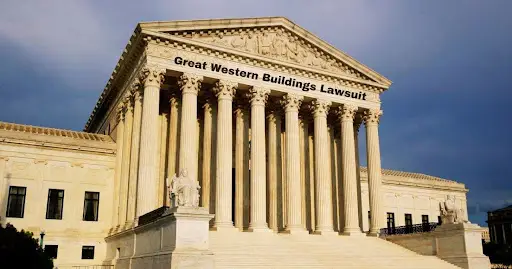Introduction
In a landmark legal battle that has captured the attention of the nation, the Great Western Buildings lawsuit has been unveiled. This high-profile case has the potential to reshape the legal landscape and has raised important questions about property rights and preservation. In this blog post, we will delve into the details of the lawsuit, its significance, and the potential implications it may have.
The Great Western Buildings: A Historical Treasure
The Great Western Buildings, located in the heart of the city, have long been considered a historical treasure. These iconic structures, dating back to the early 1900s, have witnessed the city’s growth and transformation over the years. With their unique architectural design and rich cultural heritage, the buildings have become an integral part of the city’s identity.
The Lawsuit: A Clash of Interests
The lawsuit revolves around a clash of interests between the building owners and preservationists. The owners argue that they have the right to modify the buildings to meet modern standards and maximize their commercial potential. On the other hand, preservationists argue that the buildings should be protected as they are, preserving their historical integrity and cultural significance.
The crux of the legal battle lies in determining the balance between property rights and the preservation of historical landmarks. Both sides have presented compelling arguments, making this a complex and contentious case.
The Significance of the Lawsuit
The outcome of the Great Western Buildings lawsuit has far-reaching implications beyond this particular case. It has the potential to set a precedent for future disputes involving historical landmarks across the country. The decision made by the court will shape the legal framework surrounding property rights and preservation, influencing how similar cases are approached in the future.
Furthermore, the lawsuit has sparked a broader conversation about the importance of preserving our historical heritage. It has highlighted the need for a balanced approach that takes into account both the economic interests of property owners and the cultural value of historical landmarks.
Implications for Property Owners and Preservationists
For property owners, the outcome of the lawsuit could impact their ability to modify and develop their properties. If the court rules in favor of the preservationists, owners may face stricter regulations when it comes to renovating or altering historical buildings. This could potentially limit their commercial opportunities and require them to bear the burden of preserving the historical integrity of their properties.
On the other hand, preservationists see this lawsuit as a critical moment in the fight to protect our cultural heritage. A victory in this case could strengthen their position and lead to increased efforts to preserve historical landmarks across the country. It could also encourage collaboration between property owners and preservationists to find innovative solutions that balance economic interests with the need for preservation Trulife Distribution Lawsuit .
Conclusion
The Great Western Buildings lawsuit is a significant legal battle that has the potential to shape the future of property rights and preservation in our country. As the court proceedings unfold, the nation eagerly awaits the decision that will determine the fate of these iconic structures. Regardless of the outcome, this lawsuit serves as a reminder of the importance of preserving our historical heritage and finding a balance between property rights and cultural significance.







